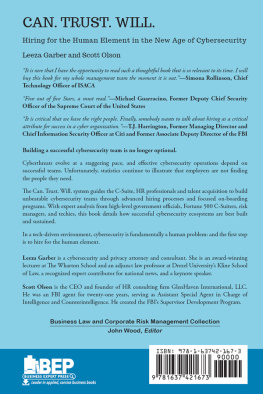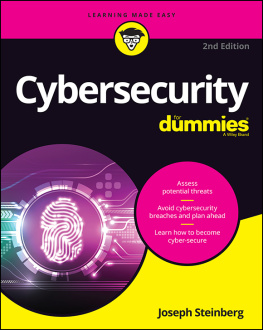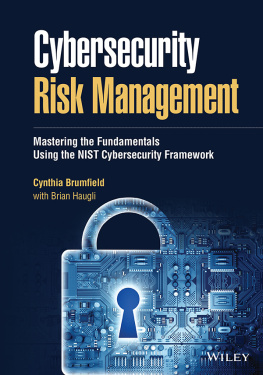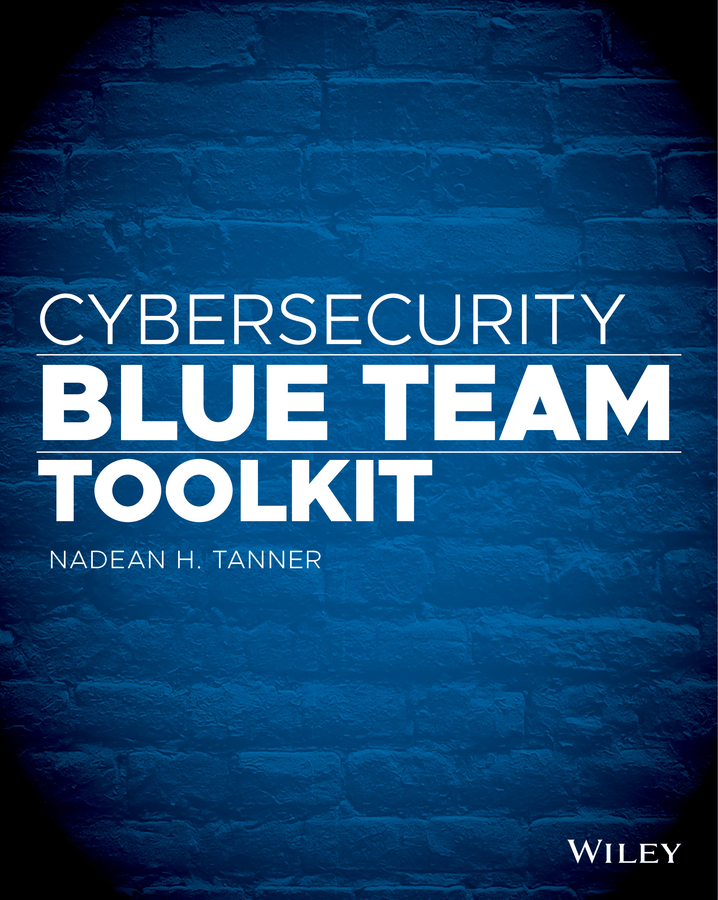Nadean H. Tanner - Cybersecurity Blue Team Toolkit
Here you can read online Nadean H. Tanner - Cybersecurity Blue Team Toolkit full text of the book (entire story) in english for free. Download pdf and epub, get meaning, cover and reviews about this ebook. year: 2019, publisher: Wiley, genre: Computer / Science. Description of the work, (preface) as well as reviews are available. Best literature library LitArk.com created for fans of good reading and offers a wide selection of genres:
Romance novel
Science fiction
Adventure
Detective
Science
History
Home and family
Prose
Art
Politics
Computer
Non-fiction
Religion
Business
Children
Humor
Choose a favorite category and find really read worthwhile books. Enjoy immersion in the world of imagination, feel the emotions of the characters or learn something new for yourself, make an fascinating discovery.

- Book:Cybersecurity Blue Team Toolkit
- Author:
- Publisher:Wiley
- Genre:
- Year:2019
- Rating:4 / 5
- Favourites:Add to favourites
- Your mark:
Cybersecurity Blue Team Toolkit: summary, description and annotation
We offer to read an annotation, description, summary or preface (depends on what the author of the book "Cybersecurity Blue Team Toolkit" wrote himself). If you haven't found the necessary information about the book — write in the comments, we will try to find it.
As reports of major data breaches fill the headlines, it has become impossible for any business, large or small, to ignore the importance of cybersecurity. Most books on the subject, however, are either too specialized for the non-technical professional or too general for positions in the IT trenches. Thanks to author Nadean Tanners wide array of experience from teaching at a University to working for the Department of Defense, theCybersecurity Blue Team Toolkitstrikes the perfect balance of substantive and accessible, making it equally useful to those in IT or management positions across a variety of industries. This handy guide takes a simple and strategic look at best practices and tools available to both cybersecurity management and hands-on professionals, whether they be new to the field or looking to expand their expertise.
Tanner gives comprehensive coverage to such crucial topics as security assessment and configuration, strategies for protection and defense, offensive measures, and remediation while aligning the concept with the right tool using the CIS Controls version 7 as a guide. Readers will learn why and how to use fundamental open source and free tools such as ping, tracert, PuTTY, pathping, sysinternals, NMAP, OpenVAS, Nexpose Community, OSSEC, Hamachi, InSSIDer, Nexpose Community, Wireshark, Solarwinds Kiwi Syslog Server, Metasploit, Burp, Clonezilla and many more.
Up-to-date and practical cybersecurity instruction, applicable to both management and technical positions
- Straightforward explanations of the theory behind cybersecurity best practices
- Designed to be an easily navigated tool for daily use
- Includes training appendix on Linux, how to build a virtual lab and glossary of key terms
TheCybersecurity Blue Team Toolkitis an excellent resource for anyone working in digital policy as well as IT security professionals, technical analysts, program managers, and Chief Information and Technology Officers. This is one handbook that wont gather dust on the shelf, but remain a valuable reference at any career level, from student to executive.
Nadean H. Tanner: author's other books
Who wrote Cybersecurity Blue Team Toolkit? Find out the surname, the name of the author of the book and a list of all author's works by series.








